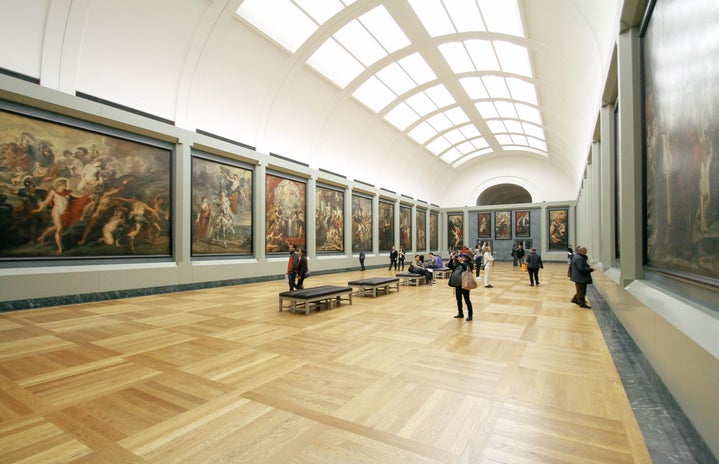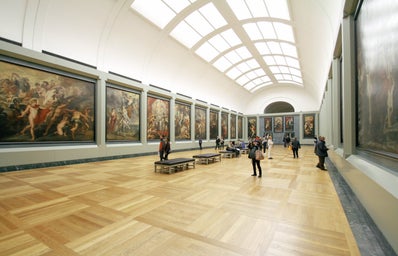Throughout history, many artists, specialists, historians and philosophers tried to define art. However, some of those definitions may contrast – especially when it comes to the function of art on society. I, personally, like Walter Benjamin’s view on the topic – he says art highlights the characteristics of a time.
And now we live in an Internet era, in which people are always showing they are happy (even when it’s not always true). In the meantime of this plastic enjoyment, society has grown its attention to mental illness. There are lots of communities online that share info on depression, anxiety, anorexia and bulimia. And some of them even encourage people who are under stress to do art therapy, which has become popular on the last decade.
But mental illness have always existed – although specialists believe that depression and “bad personality traits” became more and more common after the Industrial Revolution, due to heavy work and mass migration.
So, paraphrasing Benjamin, if society became more stressed, sad and negative since that time, how was that dark aspect reflected in artistic production? And, also, is art a coping mechanism on helping a patient to comprehend what’s going on in his or her life?
The first question is a bit tricky, as it’s surrounded by stereotypes. As well as the “mad scientist” caricature most of us laugh at, there is also an exaggerated persona we often associate with artists, that incorporate elements of both intense melancholia and talent.
Think of Vincent Van Gogh, who became famous around the internet few years ago – people, mostly teenagers around Tumblr, Instagram and Twitter, find him as means to romanticize depression, on quotes such as “I identify with him”, “his madness made the world a more beautiful place”.
Recently, there was even a necklace for sale that consisted on Gogh’s ear on a side and his head on the other, a clear (and, needless to say, disrespectful) reference to the fact that, during a violent psychotic episode, he had cut his ear.
However, coming back to our central point, we need to consider that, between Industrial Revolution and recent times, the stigma around mental illness has changed – a lot. We are now open to discuss issues that surround the mind, thanks to big revolutions on late 19th century.
Image Source: Pexels
But artists were never afraid to paint or write on whatever was on their minds – which was the case with, of course, Vincent Van Gogh, which is even studied by psychiatrists because his art is often defined as the materialisation of bipolar disorder. Yet, other clear examples are Fiodor Dostoievski (who had epilepsy at the time), Virginia Woolf (who had bipolar disorder) and Sylvia Plath (who also had bipolar disorder).
About those three cases, we never forget the impact of their writing. Sylvia Plath describes with her soul what it was like to be in a severe depressed state, and also denounces subtly the precariousness of the mental health system at the time. Virginia Woolf discusses feminism, LGBT questions and associates that with the fact she was sick. Dostoievski, remarkably one of the biggest authors of all time, presents us the innocent and epileptic prince Minchkín, describing his disease to detail – and how people dealt with that.
We cannot forget, however, that, of all artists listed, only Dostoievski didn’t “catch the bus”. And this leads to our second question – is art a way to cope with mental illness? If it is, why weren’t they saved?
According to bipolar-activist and cartoonist Ellen Forney, who wrote “Rock Steady: Brilliant Advice from my Bipolar Life”, being creative is a powerful way to let things go when your head is messy and stressed.
There is also further evidence on the topic: the Brazilian article “A Arte Como Recurso Terapêutico em Pacientes com Transtornos Mentais” (Art as a therapeutic resource on mental health patients) states that “once the behaviour of representing, with artistic resources, emotions, sensations and thoughts is installed, dysfunctional behaviour can be more easily modified” – and, consequently, the identity of the patient is restored and more defined. A person who is mostly acknowledged by society as “crazy” may find themselves, may acknowledge their own feelings and their own vision of world.
However, both texts – the cartoon “Rock Steady” and the academical article – clearly mention that art is only a mechanism, not an actual cure. Patients must also search stability through meds and therapy, and that’s why Virginia Woolf, Vincent Van Gogh and Sylvia Plath couldn’t survive – after all, treatments at their time were rudimentary.
To sum up, suffering with mental illness can be a real roller-coaster, and a patient lives with it 24 hours a day – and therapy and meds are not the only coping mechanism available. Sometimes our head is a real scrawl, and we should untangle it. Acknowledge our own feelings, especially when they are to deep to deal with alone, is a way of survival. Writing the depths of depression or painting the borderline dissociation is a way of survival. Art is a way of survival – and a way of highlighting characteristics of your own moment.



